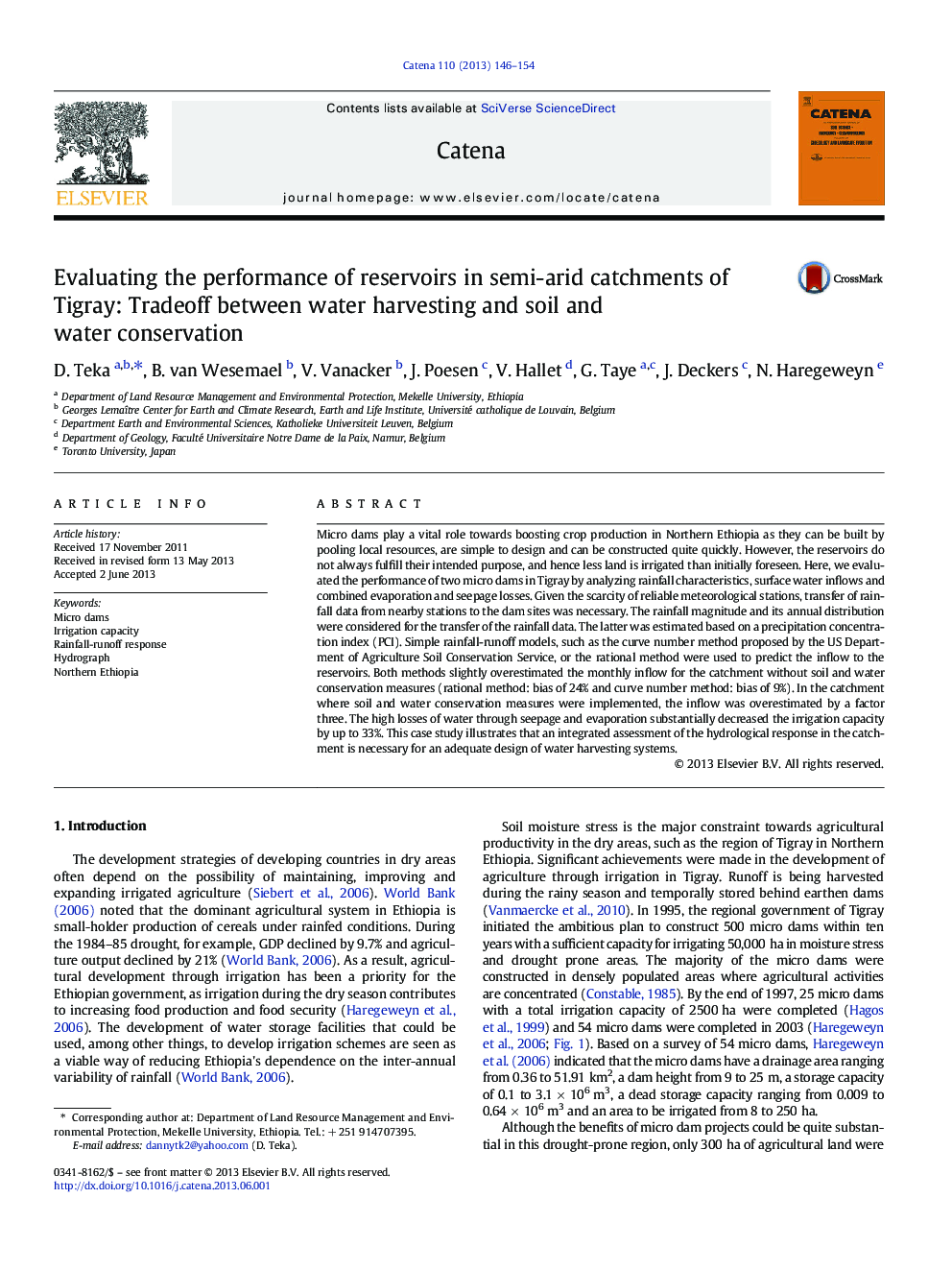| کد مقاله | کد نشریه | سال انتشار | مقاله انگلیسی | نسخه تمام متن |
|---|---|---|---|---|
| 6408168 | 1629242 | 2013 | 9 صفحه PDF | دانلود رایگان |

- Micro dam reservoirs in Northern Ethiopia do not fulfill the designed irrigation capacities.
- Rainfall stations are not representative for the reservoir sites.
- Runoff coefficients are overestimated, and time of concentration is underestimated.
- Evaporation and seepage losses are larger than expected.
- Hydrological monitoring of the existing reservoirs should improve the design of future ones.
Micro dams play a vital role towards boosting crop production in Northern Ethiopia as they can be built by pooling local resources, are simple to design and can be constructed quite quickly. However, the reservoirs do not always fulfill their intended purpose, and hence less land is irrigated than initially foreseen. Here, we evaluated the performance of two micro dams in Tigray by analyzing rainfall characteristics, surface water inflows and combined evaporation and seepage losses. Given the scarcity of reliable meteorological stations, transfer of rainfall data from nearby stations to the dam sites was necessary. The rainfall magnitude and its annual distribution were considered for the transfer of the rainfall data. The latter was estimated based on a precipitation concentration index (PCI). Simple rainfall-runoff models, such as the curve number method proposed by the US Department of Agriculture Soil Conservation Service, or the rational method were used to predict the inflow to the reservoirs. Both methods slightly overestimated the monthly inflow for the catchment without soil and water conservation measures (rational method: bias of 24% and curve number method: bias of 9%). In the catchment where soil and water conservation measures were implemented, the inflow was overestimated by a factor three. The high losses of water through seepage and evaporation substantially decreased the irrigation capacity by up to 33%. This case study illustrates that an integrated assessment of the hydrological response in the catchment is necessary for an adequate design of water harvesting systems.
Journal: CATENA - Volume 110, November 2013, Pages 146-154